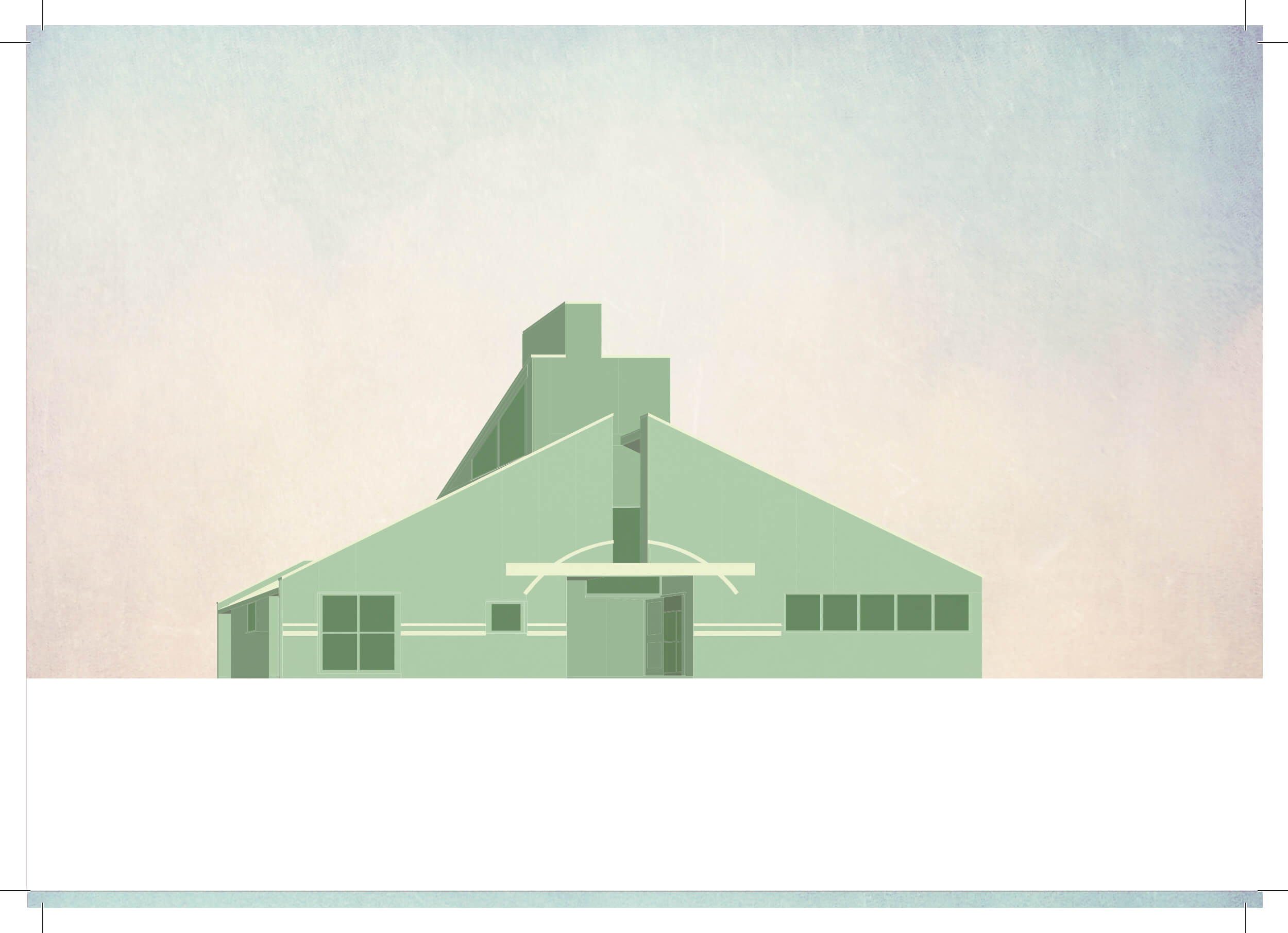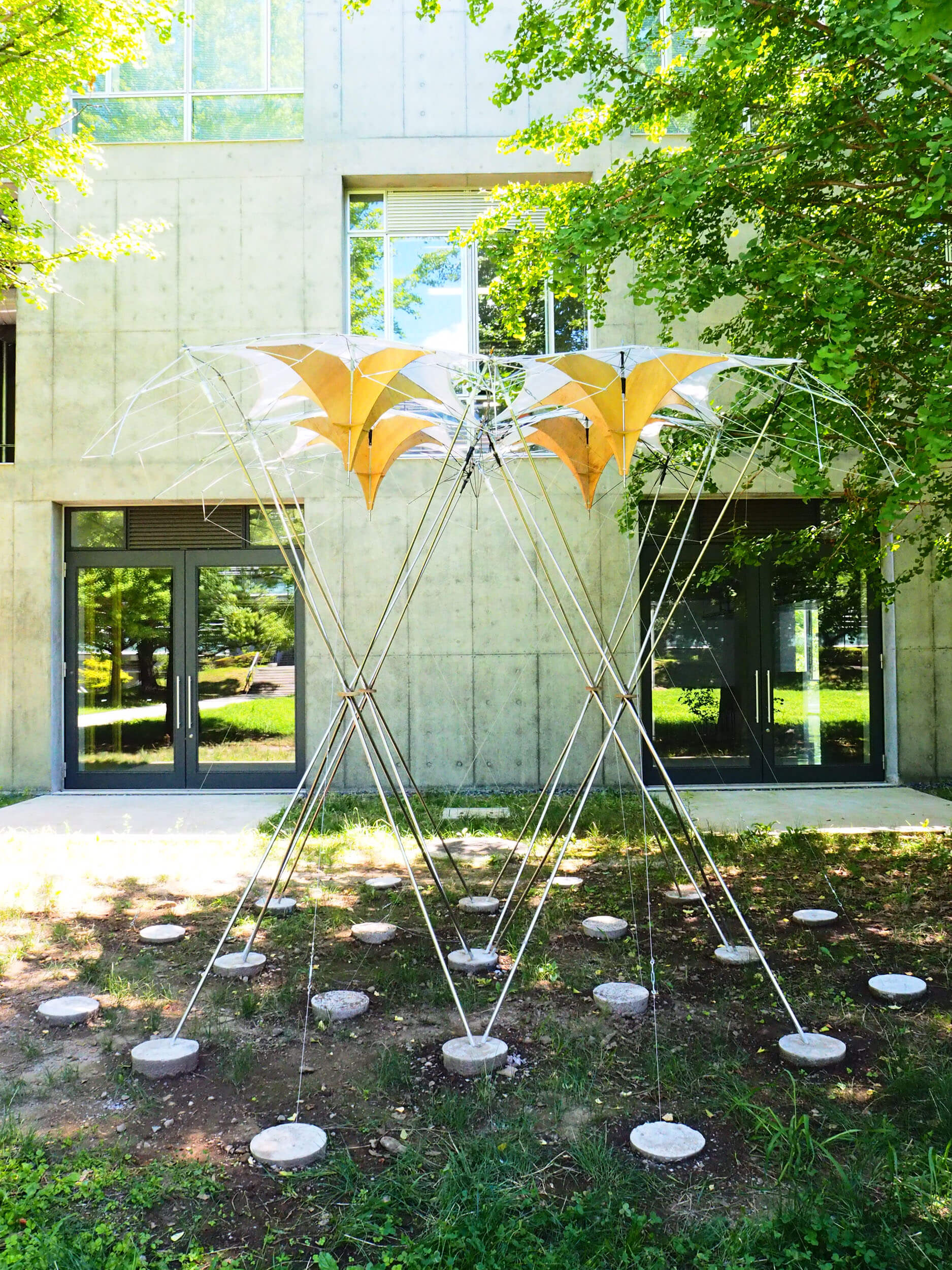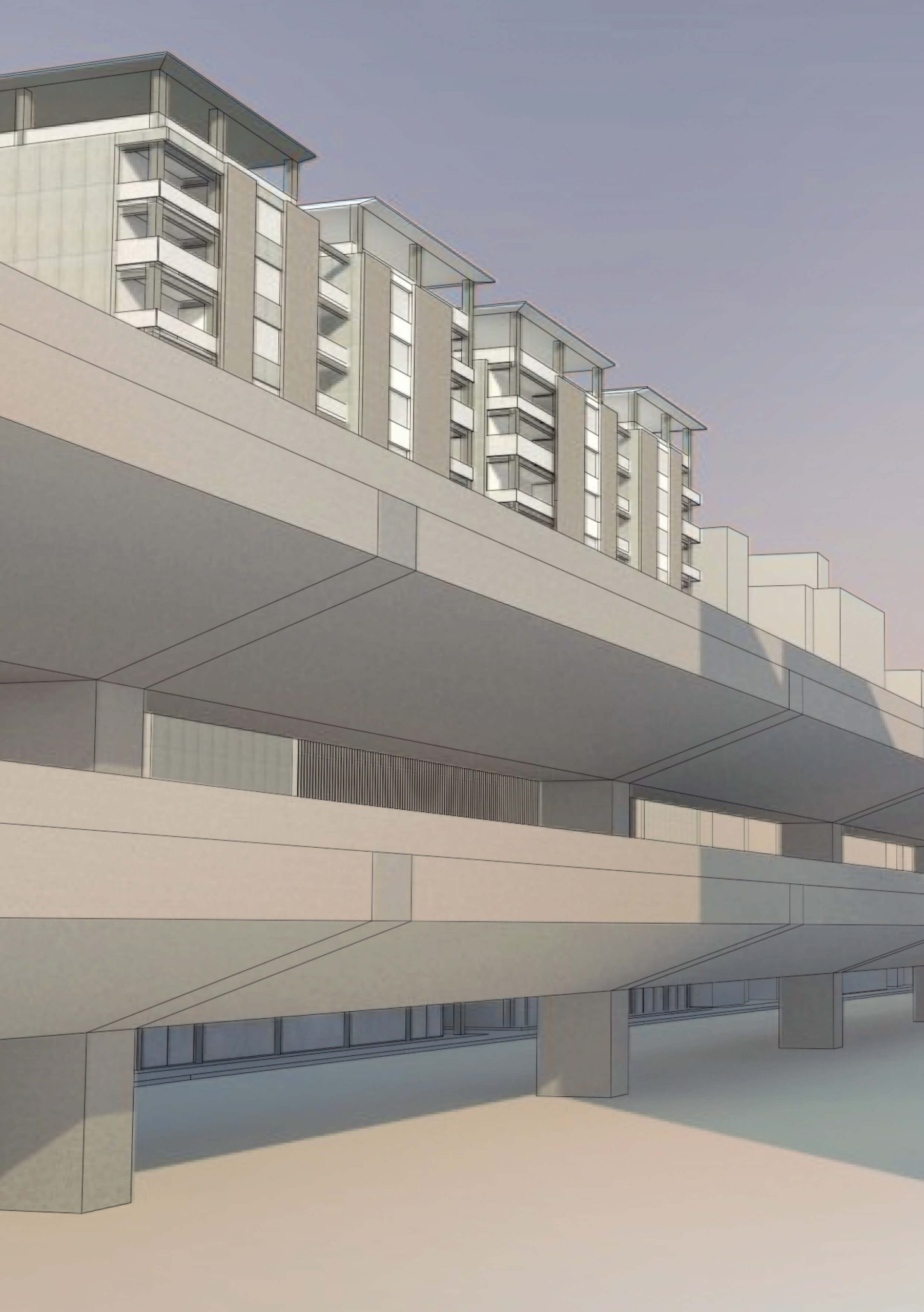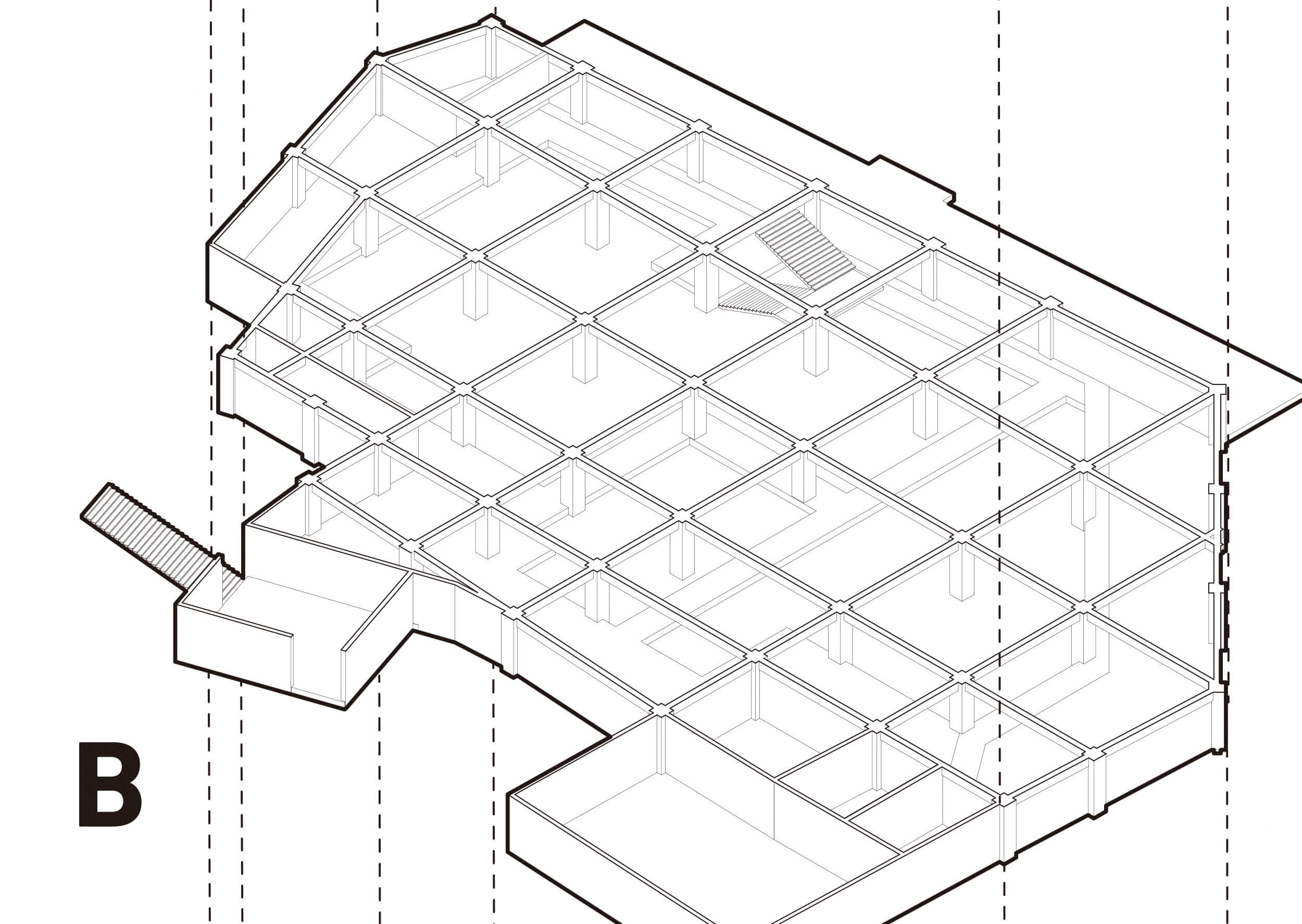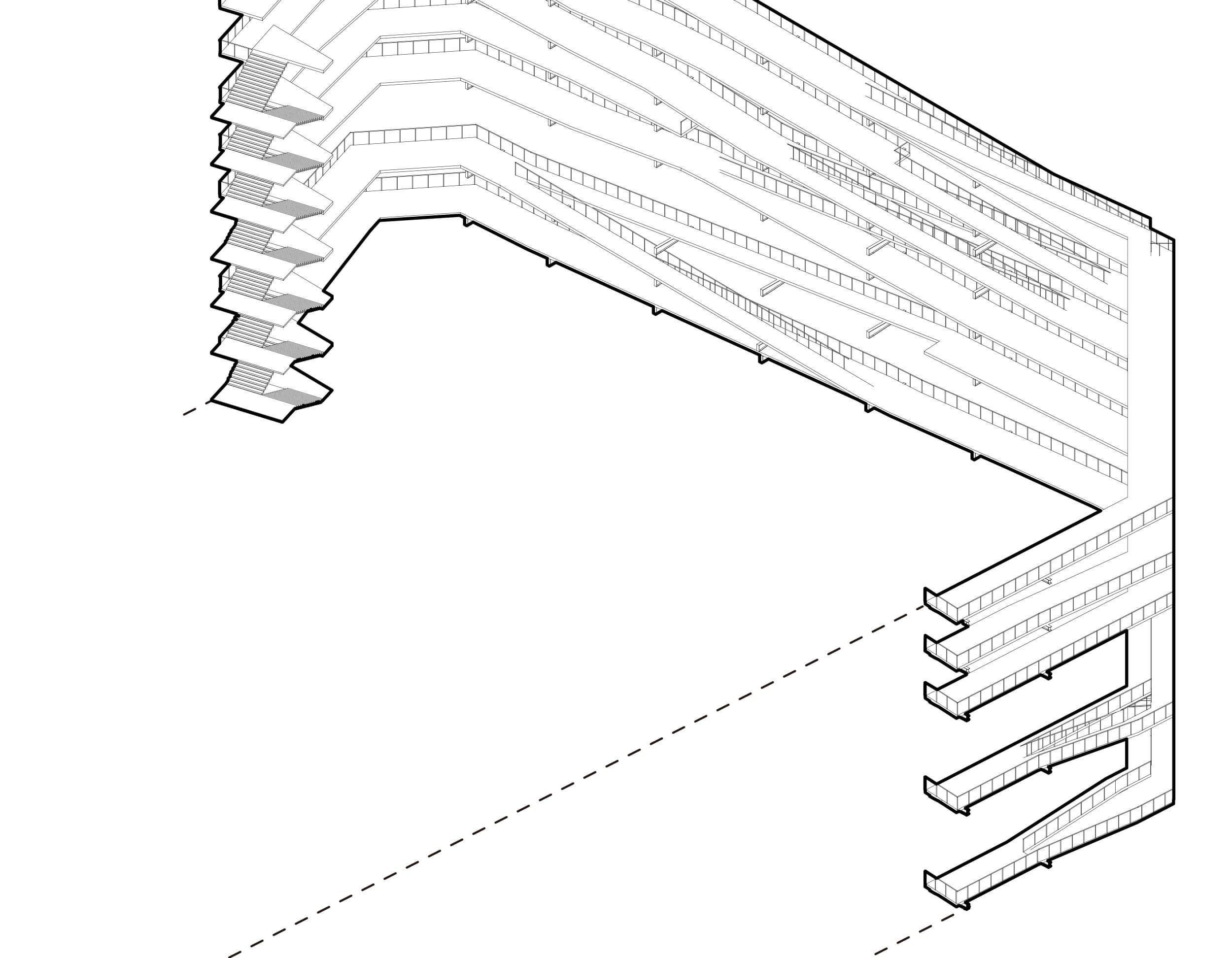Our house is difficult to explain in terms of a single clear idea, just like the Vanna Venturi House in Chestnut Hill, PA. Since the original site is wooded, while our project is situated in a dense urban area, we tried to adapt the plan to this new situation, In order to follow the pattern of the traditional Japanese machiya, we established the short side of the building as its main facade. But the entrance still maintains the character of Venturi’s mother’s house, in terms of its circulation, with the staircase and most of the doors close to the entrance.
Swallow House
The “Umbrella House” for Swallow is an elegant structure with white floating roof standing on the green park, just beside the thick gray concrete wall of Bldg. 6, which form an unexpected harmony. The idea is introduced from the ecology of swallow and the character of its habitat. Though, instead of a thick wall on which we could provide the swallow their nest, we chose the very delicate material of umbrella. It’s not only about the idea of recycling but from the studying its skeleton and organization we could get much information and relationship with this material and our target. We tried to combine them in a way that they could form a perfect geometry to hold each other as well as to create enough space and shade for swallows to build their nest.
Along The Road
The assignment is to design a “palazzo” for Tokyo in Sasazuka. The site is characterized by a large elevated expressway right in front of the building. Our design reacts to the difficult site condition by positioning a mix of functions on different levels, corresponding to the quality of that level, or lack thereof. Public, commercial spaces can be found on the ground floor, while parking space is positioned at the level of the expressway, finally, the levels above the expressway, which have the highest spatial quality, are reserved for apartments with a view.
WATERSIDE ARCHIVE
Until now, the spatial imagination has been defined by the dualism of objective and subjective. Through his critique of the double illusion, Lefebvre appealed to the need to remove the powerful constraints of the logic of dualiism, and proposed trinomialization as a critical othering. The specific methods are as follows.
1 A completely different way of thinking about space, which has been obscured by the exclusive fixation of illusory materialistic and idealistic interpretations.
2 To define the scope of the infinitely expandable spatial imagination in a comprehensive and radically open style (as an aleph).
FIRST SPACE
Practice of space (perceived space): The spatial prac- tice that poses and presupposes social space slowly and surely produces space as it dominates and takes possession of it. It is mediated by human activity, be- havior, and experience (repetitive routines).
SECOND SPACE
Representation of space (space to be thought). Iden- tifies lived experience and perceived objects with thought objects. It is constituted through the means (knowledge, symbols, rules) of decoding spatial prac- tices (actions) connected to order and design.
THIRD SPACE
A space that differs from, but encompasses, the other two spaces. The third space is different from the other two spaces, but encompasses them. It embodies a com- plex symbolic system (the darkness of social life, under- ground aspects, art, etc.).
HISTORY
In the past, Ikebukuro was located in the valley of the Tsurumaki River, which is rich in spring water, and peo- ple used to access this abundant water source to make a living by growing vegetables. However, as time went on and development progressed, the valley was filled with soil, the Tsurumaki River was culverted, and the water was no longer visible from Ikebukuro, and its fertile past was forgotten by the people. By unlocking the under- ground water in the basement of Marui, which is locat- ed on the border between the plains and the valley, and making it behave above ground, we can create an every- day relationship between water and people, and make it a place where the memory of Ikebukuro is passed on.
INTESTANT RAMP
The vertical movement of elevators and the increase of flat roads that are easy to walk due to paving have brought convenience to people’s urban life. However, as roads were paved and the city became safer, people lost the behavior of paying attention to their surroundings and checking their footing.
In addition, signs at train stations and commercial fa- cilities, as well as maps on smart phones, do not make people think about where they are going; they simply follow the directions on the signs in front of them. In cities, people follow the directions of the signs and smartphone information presented to them, without checking their surroundings or even thinking about where they are.
In a world where convenience has become the norm, we designed the ramp to break that norm and awaken the physicality that people have almost forgotten. Let’s take the human act of walking back to the level of prim- itive times.
We considered the ideas of two theorists, Shusaku Arakawa and Claude Parent. Shusaku Arakawa, a con- temporary artist, said that when one is out of balance, one reverts to an infant and is freed from the world of common sense. This is what Claude Parent says in his book “Visionary Architect”. He said, “by makg movement conscious, a whole new sensory world emerges. In response to these words, we thought that by walking on a slope, we become more aware of the gravity that is placed on our bodies. Also, it would be an opportunity for people to regain their physicality, which they had forgotten until now.
This intervention consists of two vertical circulation on the façade; the first a barefoot ramp; the second, a stairway to be walked with shoes. The barefoot ramp connects the 3FL Napping-Beach and the 8th floor Tat- ami-Beach with a single path, and the steep 15 percent slope and unevenness of the floor that can be felt with bare feet remind us of the behavior of walking. By con- sidering the dead space at the intersection of the ramp and the shoes as a niche, we have created a space where people can stay in the linear flow line.
The other staircase, where people walk with their shoes, becomes a place that connects the behavior of each floor. For example, a semi-outdoor space on the 5th floor is connected to the rooftop festival, and signs made on the 4th floor are installed on each floor.
Depending on the direction of movement, the direction of gravity changes. This causes a change in the feeling and load (ascent, support, fatigue or descent, accelera- tion, elation) that we feel. Through experiences that put a strain on the body, such as being “dragged,” the senses of elation and resistance are refined. The slant of the floor, or slope, makes you feel gravity strongly even when you are standing still. You will be aware of a load that you cannot experience on a flat surface.
Because people are frequently isolated in their habita- tion, they eliminate the possibility of interaction. By walking on a slope, we are strongly aware of the gravity that is placed on our bodies. I think this will be an op- portunity for people to regain their physicality, which they have forgotten until now.
Information that works directly on the body.
